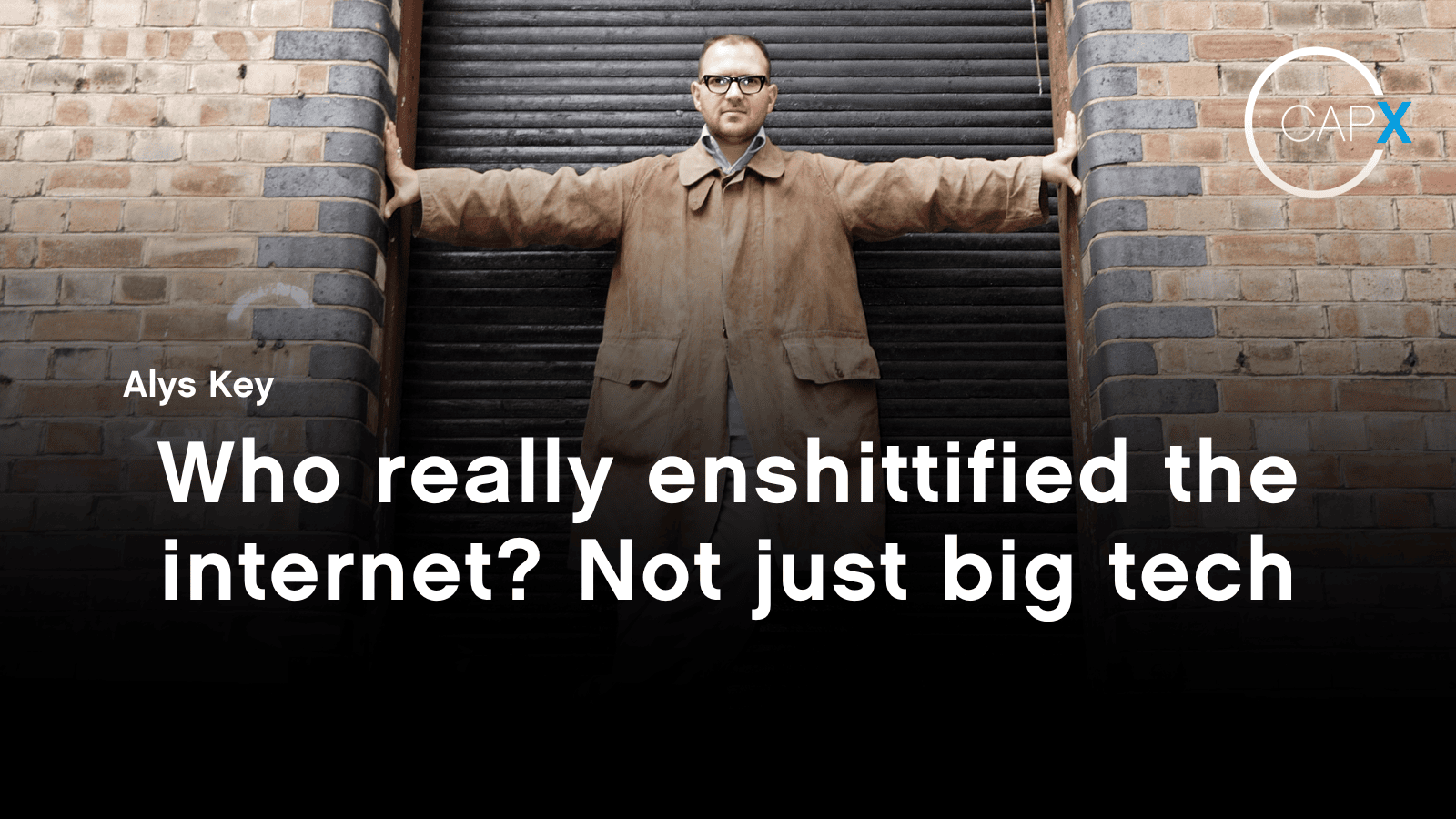Share
Enshittification has been memeified and diluted
Users prefer algorithmic feeds – even while complaining about them
Regulations like GDPR and the Online Safety Act have made the online experience worse
Enshittification is everywhere. When the term was coined in late 2022 by the author Cory Doctorow, it swiftly went viral and became embedded in the lexicon. By the end of last year, it had been added to several dictionaries.
The neologism describes the way online platforms degrade in quality as they prioritise profit. Sites lock in users, then business customers. Eventually, both individuals and advertisers are locked in by the network effect – they cannot leave without the high cost of losing access to friends, colleagues, customers, or sometimes to goods and services. That, so the argument goes, is when the platform owner can start squeezing for profit, focusing on the bottom line over providing a good service.
It’s a useful, quick-and-dirty term for the kind of slow decline of our social media feeds and our subsequent disillusionment with the entire model. Crucially, it explains why it can feel so hard to leave even as things get worse.
Yet the idea has been eroded by its own popularity. Everything from work to air travel has been declared enshittified. On social media, any change to a platform an observer doesn’t like is now labelled enshittification. Sometimes no change is necessary at all. On Bluesky, the latest fracas revolves around the developer team sticking to their own guidelines and refusing to ban profiles in the face of pressure. This, too, has been diagnosed as enshittification.
In the introduction to his new book about the phenomenon, published earlier this month, Doctorow clarifies that enshittification isn’t just a way to say ‘something got worse’, but a specific process. Not just about the changes themselves, it describes the conditions that allow them to happen.
At its heart, enshittification is about Doctorow’s favourite topic: vendor lock-in. This is a real concern, especially for anyone trying to build an audience online. We’re currently seeing the pattern play out again on Substack, as the platform pushes more users to ‘follow’ creators rather than subscribing to easily exportable mailing lists; as it becomes harder to leave Substack without taking a hit to one’s audience, it will be easier for the company to make potentially unpopular changes (such as requiring writers to pay to host their publications) without causing an exodus.
Doctorow is relaxed about the elasticity of the term he created. In that same introduction, he undercuts himself with a footnote assuring readers it’s fine if they want to use it to mean ‘got worse’. But when it gets bandied about, there’s a risk that this specific problem of lock-in gets subsumed into a reflexive strain of techlash and our more general fatigue with social media. Enshittification has been memeified and diluted, added to the generic, ‘bad billionaire’, surveillance capitalism school of criticism that blames platform owners for all our ills; it feeds into calls for dramatic government intervention in the form of bans and break-ups. But there is a bigger picture as to how we got here, and it includes individuals and lawmakers just as much as tech giants.
As users, we tend to underestimate our own agency. Former Google engineer Amol Kapoor has even argued that enshittification may be partially our fault: while platforms are certainly making changes to capture more value, our own behaviour has driven many of those shifts. Our preference for algorithmic feeds, despite our professed disdain for them, are one example of how we inadvertently shape these apps.
Regulation can therefore seem like the cleanest solution: if tech companies are unable to resist taking the most profitable route, and if users cannot tear their eyes away even from apps they claim they hate, surely we should just put in new rules to stop them?
New laws or agreed standards seem inevitable, given the scale of the challenge social media poses. As Kapoor writes, it will not be surprising, ‘if future generations saw algorithmic personalization as equivalent to how we see cigarettes today’.
But the road there looks rocky, with many poorly thought-out regulations along the way. If the problem of enshittification is that it undercuts the free and open web by trapping individuals and businesses on certain platforms, adding further restrictions often does little to help. We have seen this already in the fallout of the Online Safety Act. Heftier burdens for websites that host user generated content have led smaller, independent operators to shut up shop while the big platforms consolidate their reach.
Regulations can also play their own part in making the online experience worse for users. GDPR gave us endless cookie-click notices and being locked out of access to certain international sites. Now, as a result of the Online Safety Act, age verification is adding to the layers that stand between a user and free exploration of the web. Doctorow himself is a longtime critic of the way US copyright laws can be used to trap customers, for instance in the way Amazon keeps audiobook listeners locked into its own systems.
It’s easy for this debate to fall into the realm of neo-ludditism or pearl-clutching moral panic. Yet enshittification is a useful diagnosis of one reason why so many of us feel dissatisfied with our online lives. Reactionary lawmaking won’t work, nor will telling users they are powerless in the face of enshittification. Instead, we should be precise about the problems we face and push for solutions that promote the free and open promise of the internet.
– the best pieces from CapX and across the web.
CapX depends on the generosity of its readers. If you value what we do, please consider making a donation.
Columns are the author’s own opinion and do not necessarily reflect the views of CapX.

